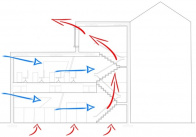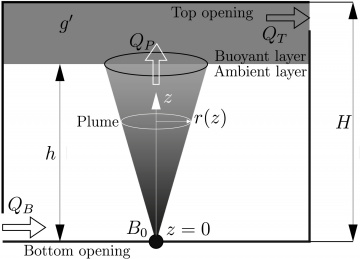Natural ventilation of buildings

Natural ventilation is a phenomenon in which natural air exchange occurs between the external and the indoor environment of a building. These exchanges are triggered by a pressure difference (and temperature difference), where hot and polluted air flows out and it is replaced by fresh air from the surrounding area. Thus, achieving natural air re-circulation. Over the last ten decade, numerous scientific studies have focused on natural ventilation issues related to air quality in enclosed spaces and to minimize energy consumption for air-conditioning.
The DIATI air quality research group studies the effect of an incoming wind with a stochastic component. As a matter of fact, as we experience daily, the wind exhibits stochastic characteristics due to atmospheric turbulence.
In addition to the development of models and numerical simulations, the stochastic effect of the wind is studied experimentally, through experimental tests carried out in the wind tunnel of the LMFA laboratory at the Ecole Centrale de Lyon.
 Sketch of the natural ventilation system evaluated during the research. It consists of a room with a source that generates an ascending heat plume.
Sketch of the natural ventilation system evaluated during the research. It consists of a room with a source that generates an ascending heat plume.
PhD thesis: Teresa Di Renzo
Researchers: Riccardo Vesipa, Luca Ridolfi, Massimo Marro, Pietro Salizzoni
References: R Vesipa, L Ridolfi, P Salizzoni (2023), Wind fluctuations affect the mean behaviour of naturally ventilated systems, Building and Environment, 229, 10992.
